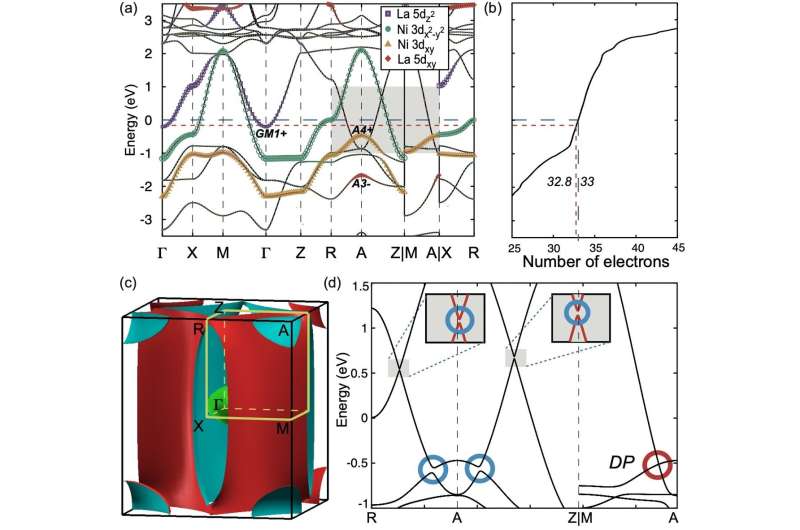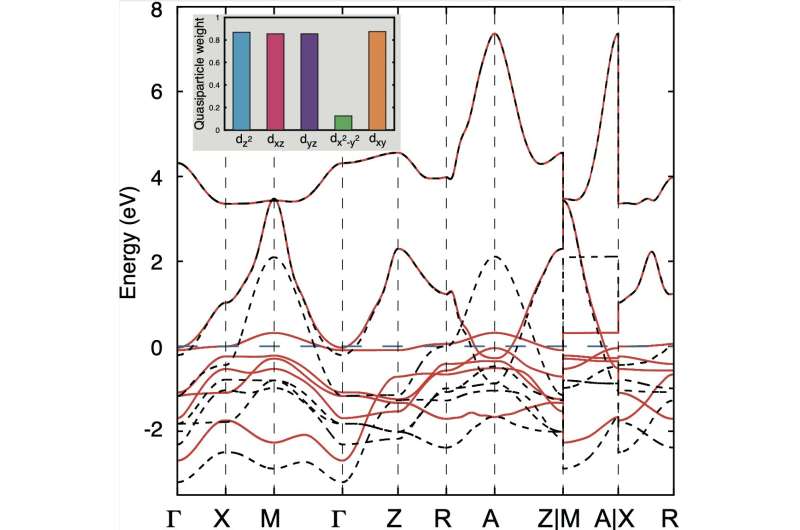Progress in electronic structure and topology in nickelates superconductors

The discovery of high Tc superconductivity in cuprates attracts people to explore superconductivity in nickelates, whose crystal structures are similar to cuprates. Recently, Danfeng Li et al. at Stanford University published an article in Nature, reporting the observed superconductivity in hole-doped nickelates Nd0.8Sr0.2NiO2. Different from cuprates, the parent compound NdNiO2 does not preserve long range magnetic order, which was thought to be responsible for superconductivity in copper oxides. Besides, the ground state of NdNiO2 is metallic. The comment article In Nature noted that Li's work could become a game changer for our understanding of superconductivity in cuprates and cuprate-like systems, perhaps leading to new high-temperature superconductors.
In order to understand the mechanism of nickelates superconductors, scientists at the Institute of Physics, Chinese Academy of Science made a careful analysis on the parent compound NdNiO2, including its electronic band structure, orbital characteristics, Fermi surfaces and band topology by using first-principles calculations and Gutzwiller variational method. The results show that the electron Fermi pockets are contributed by Ni-3dx2-y2 orbitals, while hole pockets consist of Nd-5d3z2-r2 and Nd-5dxy orbitals. By analyzing elementary band representation in the theory of topological quantum chemistry, the authors found that a two-band model can be constructed to reproduce all bands around Fermi level.
The two bands originate from two orbitals, including one Ni-3dx2-y2 orbital and one s-like pseudo-orbital located on the vacancy of oxygen atoms. Besides, the authors found that band inversion happens between Ni-3dxy states and conduction bands, resulting in a pair of Dirac points along M-A in the Brillouin zone. In addition, to take the correlation effects of Ni 3d electrons into consideration, the authors performed the DFT + Gutzwiller calculation. The results show that the half occupied 3dx2-y2 orbital have the smallest quasiparticle weight (about 0.12); namely, the 3dx2-y2 band width after renormalization is about 1/8 of DFT results. On the other hand, the Dirac points along M-A high symmetry line become closer to the Fermi level due to the band renormalization. In this work authors calculated the electronic structure, discussed topological properties and constructed a two-band model. These results will help people for the study of topology and superconductivity in nickelates.

More information: Jiacheng Gao et al, Electronic structures and topological properties in nickelates Lnn + 1NinO2n + 2, National Science Review (2020). DOI: 10.1093/nsr/nwaa218
Journal information: Nature
Provided by Science China Press





















